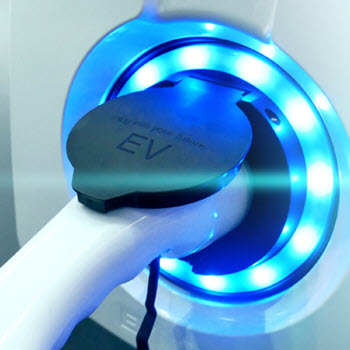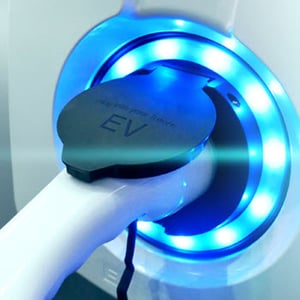Curing Material on an Aluminum Mandrel
Objective Heat a customer supplied aluminum cylinder to 80-120°C for a material curing application. More application notes
Processes
Processes: More
Processes: More

Industries:
Industries: More
Industries: More
Industries: More

Products:
Products: More
Services:
Services: More

Learn:
Learn: More
About:



Our new white paper on "Using Induction Heating with Electric Motor and Electric Vehicle Manufacturing" is now available. Check out the introduction to get a sense of this new document written by Dr. Girish Dahake from THE LAB at Ambrell:
Electric vehicles (EV) are steadily gaining in popularity. They offer significant environmental advantages. Hybrid vehicles generate significantly reduced emissions and electric vehicles produce none at all. A few years back it would have been hard to imagine the emergence of EVs at this speed. It is now clear that they are here to stay. The manufacturing process has presented new challenges which have required unique and creative solutions. An electric vehicle uses power from a battery pack inside the car to power an electric motor that turns the wheels, thus eliminating the need for an engine. A typical EV has about 90% less moving parts than an internal combustion engine. In a manufacturing environment this means less parts to assemble, less complexity and a lighter package. EVs produce instant torque, so the drive start is quick. Conventional technology, however, can produce the same torque, but at speed. Therefore, a lot of electric cars feel lighter to drive along with numerous other advantages in manufacturing.
The drive train of an electric vehicle is coupled directly to the electric motor. The electric motor is comprised of a housing, a stator and a rotor. The stator is the stationary part as the name suggests, and the rotor is the rotating/ moving part that spins a shaft, which creates torque and turns the wheels. The stator and the rotor interact magnetically so as to convert electrical energy to mechanical energy. The electric motor receives its electrical energy from an inverter, which in turn receives its energy from a battery pack resident on the electric vehicle.
Induction heating is a popular method for heating metal parts in the manufacturing processes of electric vehicles. A typical induction heating system is made up of an induction heating power supply, matching circuit and an induction heating coil. The induction heating coil is made of a water-cooled copper tube that has a high frequency alternating current flowing through it. This alternating current in the induction coil creates an intense magnetic field near the copper. The magnetic field produces an alternating current (eddy current) in the metal part placed in its vicinity. The eddy currents flow against the resisitivity of the metal and produce heat. Induction heating is used because of its speed, accuracy, repeatability and efficiency.
The paper goes on to cover a white range of electric vehicle and electric motor applications that leverage induction heating. Be sure to read this new white paper today!

Objective Heat a customer supplied aluminum cylinder to 80-120°C for a material curing application. More application notes

In today’s manufacturing landscape, efficiency, precision, and sustainability are critical. Induction heating—a process that uses electromagnetic...

When it comes to many manufacturing processes, including this forging application, precision and efficiency are critical. Traditional heating methods...